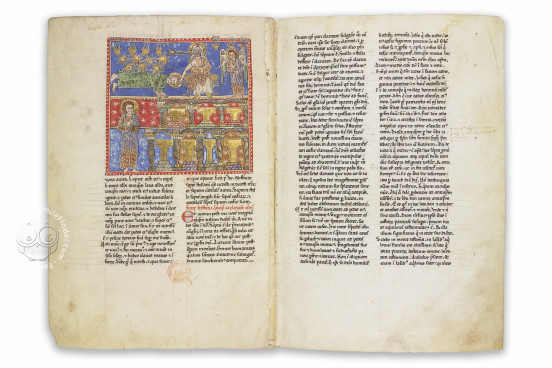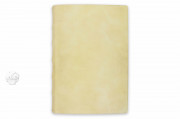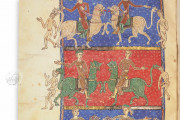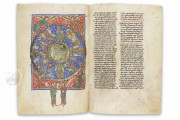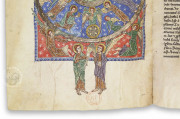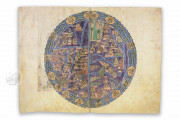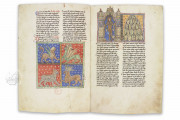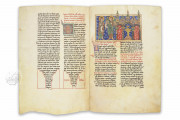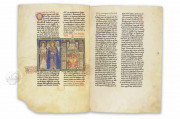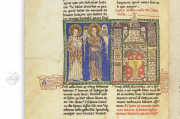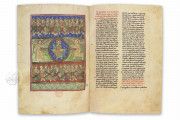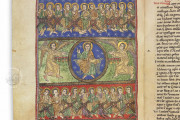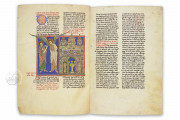The Arroyo Codex is a deluxe manuscript of Beatus of Liébana's commentary on the last book of the Christian Bible, the Apocalypse. Its seventy miniatures vividly portray the events described in the biblical text, Saint John the Divine's vision of events leading to the end of time. Its paintings are in an intense palette dominated by green, blue, and red, with generous use of gold and silver leaf. It was created around 1220-1235 in northern Spain and comes near the end of a centuries-long Iberian tradition of producing illuminated manuscripts of Beatus's commentary.
The book's text is arranged as was customary in manuscripts of Beatus's commentary, with biblical passages (each labeled historia—"narrative") alternating with passages from the commentary (each labeled explanatio—"interpretation"). The miniatures, which illustrate the biblical text, usually appear between the narrative and its explanation.
One of a Trio
The Arroyo Codex is the latest of three closely related illuminated manuscripts of Beatus's text. The others are the Manchester Codex and the Cardeña Codex. The style of illumination and pictorial features are especially reminiscent of the work of the painters of the Cardeña Codex.
A Map of the World
An impressive circular mappa mundi extends across two pages (fols. 13v-14r). The waters of rivers and seas are rendered in blue and white, with land masses colored purple. The whole is surrounded by a fish-filled sea with far-flung "islands," including Scotland and Bithynia (the region along the south coast of the Black Sea). Adam and Eve appear, covering their nakedness with enormous leaves, having been evicted from paradise.
Innovative Treatment of Traditional Subjects
The artists of the Arroyo Codex were aware of the latest trends in French manuscript painting. Although only half of the original composition of the Last Judgment survives (fol. 160r), it displays a new way of visualizing the scene: the damned are in an enormous hell mouth seen from above, and a group of the damned—including a pair of kings, a bishop, and a group of monks—are roped together and led to their fate by a hairy demon.
Monumental Presentation
The presentation of text and image is stately. The text is written in two columns in the Transitional Script that displays the nascent features of Gothic formal script. Pen-flourished initials articulate the textual divisions, and the scribes frequently tapered line lengths to make the text fill a column before a miniature.
Possible Royal Patronage
By the fifteenth century, the manuscript was at the Cistercian monastery of San Andrés de Arroyo, and it was probably made with that house as its intended destination. The foundation enjoyed royal patronage, and it is possible that a Castilian ruler commissioned the manuscript for the monastery.
A Leaf Separated from Its Context
More than a dozen leaves are missing from the book. The manuscript entered the Bibliothèque nationale (now Bibliothèque nationale de France) in 1882. The cutting in the Getty Museum (most of a leaf that originally followed fol. 145 in the Paris manuscript) passed through the collections of Eugène Rodrigues (1853-1928), Robert von Hirsch (1883-1977), and Bernard H. Breslauer (1918-2004) before being acquired by the museum in 2003.
_____
For more information on the Beatus model, read our blog article by Amy R. Miller (PhD, Medieval Art History, University of Toronto).
We have 1 facsimile edition of the manuscript "Beatus of Liébana - Arroyo Codex": Beato de Liébana, códice del Monasterio de San Andrés de Arroyo, Palencia facsimile edition, published by M. Moleiro Editor, 1998
Request Info / Price
